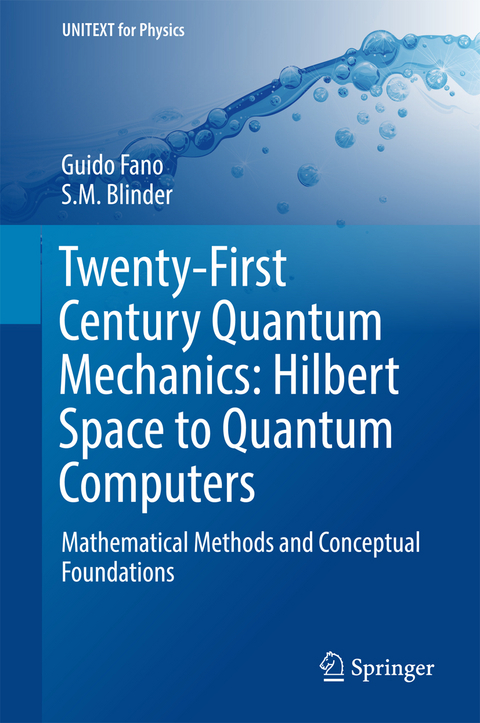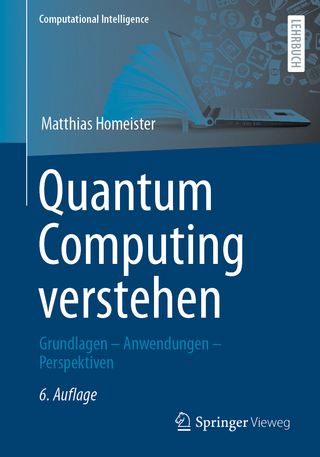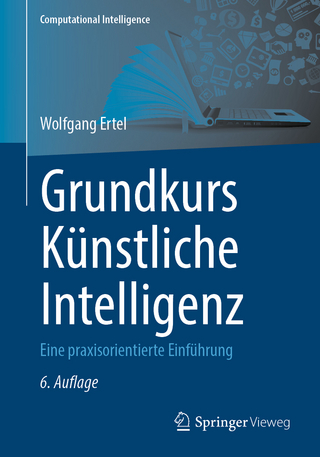
Twenty-First Century Quantum Mechanics: Hilbert Space to Quantum Computers
Springer International Publishing (Verlag)
978-3-319-58731-8 (ISBN)
Guido Fano graduated magna cum laude in Physics at the University of Rome in 1955 and earned university degrees in Theoretical Physics and Mathematical Methods of Physics. He taught at several universities, including Naples, Ferrara, Bologna, and Marseille, and progressed from being an assistant lecturer to senior lecturer and, finally, Professor of Mathematical Methods of Physics. Professor Fano is a specialist in the quantum many-body problem, with particular emphasis on the mathematical aspects. He is the author of about 60 publications in international journals as well as several textbooks. He is responsible for some particularly significant results concerning the existence problem for the time-dependent Hartree-Fock equations, the use of non-orthogonal orbitals in Quantum Chemistry, and the asymptotic behavior of the Taylor expansion coefficients of some sequences of polynomials. Seymour M. Blinder is Professor Emeritus of Chemistry and Physics at the University of Michigan, Ann Arbor, USA. He completed his PhD at Harvard University in 1958, under the supervision of Profs. W.E. Moffitt and J.H. Van Vleck (Nobel Prize in Physics, 1977). Professor Blinder has published more than 200 publications in both Theoretical Chemistry and Mathematical Physics. He was the first to derive a closed-form expression for the Feynman path-integral propagator for the Coulomb problem (the hydrogen atom). He is the author of several books and monographs. Professor Blinder is currently a telecommuting Senior Scientist for Wolfram Research (the developers of Mathematica and other scientific software).
1 Twentieth Century Quantum Mechanics.- 2 Mathematical Methods in Quantum Mechanics.- 3 The Schroedinger Equation.- 4 New Adventures: Isotropic Vectors, Rotations, Spinors and Groups.- 5 Quantum Entanglement and Bell's Theorem.- 6 Digital and Quantum Computers.- Bibliography.
"I agree with the authors that this is the excellent introductory book for non-specialists to quantum theory, though I would recommend it to all curious researchers whose perception of the world that surrounds us raises the questions of what, why and how is out there?" (Eugene Kryachko, zbMATH 1377.81005, 2018)
“I agree with the authors that this is the excellent introductory book for non-specialists to quantum theory, though I would recommend it to all curious researchers whose perception of the world that surrounds us raises the questions of what, why and how is out there?” (Eugene Kryachko, zbMATH 1377.81005, 2018)
| Erscheinungsdatum | 14.07.2017 |
|---|---|
| Reihe/Serie | UNITEXT for Physics |
| Zusatzinfo | XVI, 271 p. 142 illus., 12 illus. in color. |
| Verlagsort | Cham |
| Sprache | englisch |
| Maße | 155 x 235 mm |
| Gewicht | 596 g |
| Themenwelt | Mathematik / Informatik ► Informatik ► Theorie / Studium |
| Mathematik / Informatik ► Mathematik | |
| Naturwissenschaften ► Physik / Astronomie ► Quantenphysik | |
| Naturwissenschaften ► Physik / Astronomie ► Theoretische Physik | |
| Schlagworte | Bell’s inequality • Bell's Inequality • fundamental concepts of Quantum Mechanic for non-s • fundamental concepts of Quantum Mechanic for non-specialist • Heisenberg uncertainty principle • hidden variables • History and Philosophical Foundations of Physics • History of Science • Isotropic vectors • Mathematical Applications in the Physical Sciences • mathematical aspects of quantum mechanics • Mathematical methods in physics • Mathematical Modelling • Mathematical Physics • Mathematical theory of computation • Measurement and decoherence • .NET Mobile Information Server • .NET My Services • .NET Remoting • Physics • Physics and Astronomy • Quantum Computation • Quantum Computing • Quantum Cryptography • quantum entanglement • Quantum Physics • Quantum physics (quantum mechanics & quantum field • Quantum physics (quantum mechanics & quantum field • Schrödinger equation • Spin of elementary particles |
| ISBN-10 | 3-319-58731-5 / 3319587315 |
| ISBN-13 | 978-3-319-58731-8 / 9783319587318 |
| Zustand | Neuware |
| Informationen gemäß Produktsicherheitsverordnung (GPSR) | |
| Haben Sie eine Frage zum Produkt? |
aus dem Bereich


